Chase Ace 2
Chase Ace 2 is the independent project of Space Time Foam, a "living room" developer and publisher based in Copenhagen, Denmark, and it's a shoot-'em-up designed with a cartoon look and feel.
Chase Ace 2
Developer: Space Time Foam
Publisher: Space Time Foam
Release date: available now
By T. Byrl Baker
"Fly your spaceship around on the level and shoot at everything that shoots at you."
You've just read the entire instruction manual for Chase Ace 2, Space Time Foam's top-down action game that puts a pretty face on old-school arcade gameplay. The actual game isn't quite that simple, considering that there are things like refueling zones where ailing ships can replenish their shields and weapons and safe zones that offer a respite from the relentless action, but there's still very little time to think about anything other than your immediate survival. And with up to eight players fighting just for the sake of fighting, multiplayer matches can generate a lot of trash talk. Chase Ace 2 is all about fast reflexes, as players must constantly nab power-ups and avoid obstacles like mines and gravity wells, all while trying to both shoot enemies and avoid being shot. It's a lot like Combat from the old Atari 2600 days, if Combat was soaked in gasoline, lit on fire, and launched into outer space.
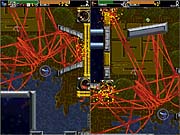
The "2" in the game's name is there for a reason, as this is the sequel to the popular Chase Ace. New in this edition are AI-controlled enemies, better graphics, and completely customizable gameplay. The only thing that hasn't changed is the high-speed mayhem that takes place during each game. The playable ships have slightly different top speeds and turning radii, but each hurtles around the arenas at blinding speeds and maneuvers with the agility of a housefly. Combat is purely "point and shoot," but drawing a bead on a wildly maneuvering enemy while dodging obstacles and incoming fire is a real challenge.
Aside from the frenetic action, Chase Ace 2 is most famous for its slick graphics engine. Playing the game is like plunging into a cartoon, complete with screen-filling explosions that send debris flying everywhere. Chase Ace 2's arenas are just as deadly as enemy spacecraft, packed with things like automated turrets, acid puddles, and bombs. Despite the game's pseudo-3D look, the entire game is done in 2D and runs smoothly on just about any system without requiring an accelerator card.
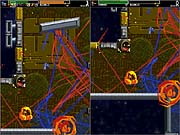
Like most games from independent developers, much of Chase Ace 2's appeal comes from its open-ended nature. Players can customize nearly every aspect of the game, and it comes with a complete level editor that has been put to good use by a loyal fan community. Space Time Foam maintains a page at its site where these levels can be downloaded, and as each is only a few kilobytes in size, it's easy to spend hours exploring other people's creations. The drag-and-drop interface for making levels is about as straightforward as these things get, and we had created our first small arena within an hour of launching the editor.
Perhaps the most amazing thing about Chase Ace 2 is that so few people were involved in its creation. One individual, Tobias Thorsen, was responsible for the bulk of the game, and several of his friends pitched in to create more levels, music, graphics, and sound effects. Thorsen was kind enough to answer some of our questions about the game and being an independent developer.
Next: Dive into our Q&A with Chase Ace 2's Tobias Thorsen
Q&A With Space Time Foam's Tobias Thorsen
GameSpot: What sets Chase Ace 2 apart from similar games?
Tobias Thorsen: We feel that the look of the game is unique. The movement and dynamics are technically very simple and no match for what advanced 3D engines do, but they were created by cartoon fans and people with a great deal of animation experience, so the entire look and movement of the game has a feel that shows dynamic behavior. Not necessarily realistic, but it works.
If simplicity is a feature, Chase Ace 2 has that as well. The gameplay cuts down to the bone and says, "Shoot everything that moves." The basic concepts of Chase Ace 2 are minimalist, but when combined, they form very entertaining gameplay.
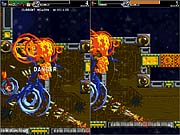
Almost every feature, weapon, and detail in Chase Ace 2 has been designed as a result of playing it. Development started with no fixed schedule, and we just added features as we went along. You could say that we created the game because we needed the game ourselves. It kind of grew out of [us] playing it.
I suspect that other game developers, at least the bigger ones, usually have a plan before they plunge into actual coding. We just went from idea straight to coding--no second thoughts, and if it sucked, we had to take it out again. A waste of resources some would say, but we learned a lot in the process.
GS: How did you work out the game physics?
TT: Along the way. Development was started as a test, and the entire game has been built on top of the original core. The physics model was developed as each element was introduced. The basic physics engine is very simple and not particularly realistic, but in a game like Chase Ace 2, that's not very important. If it looks right, it is right. This way of designing is largely influenced by the cartoon animation background many of us have.
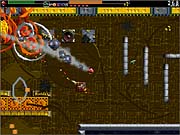
Physics and motion in general are extremely important when designing "things that move," be they games, cartoons, or whatever medium. If something has slow and untimed motion, it is generally not interesting to look at. On the contrary, if something moves snappily and with good timing, it grabs attention and convinces the viewer that it is "real" in some sense. We tried to transfer these techniques to the dynamics and motion in Chase Ace--never fully relying on Newtonian laws, but rather on homemade algorithms that made it look cool to us.
GS: Keeping the play as balanced as that of the original Chase Ace while adding a lot of features must have been tough. How did you do it?
TT: As mentioned before, the game was created for us to play. We tested even the smallest feature as it was added in the game, and if anything needed to be changed it was done quite soon. Whenever a weapon or some other feature seemed to "tilt" the balance, it was changed.
GS: Has anyone inspired you to do what you've done? Are there any games that influenced the Chase Ace series?
TT: Actually there was this really simple little game called SWAR, which I downloaded from PLBM Games' homepage (www.plbm.com). The game is a two-player shootout on a black background, and it's very basic. My friend Jeppe Juul and I played the game for a while, but it became boring and we kind of forgot about it eventually.
Next: "Sit down and play" game design and pirate fans
The very first version of Chase Ace was created a few weeks later over a weekend, and it proved to be so fun to play that it sort of evolved from there. We continued to build features into the game, and eventually we came to Release 1.
Other "inspirations," if you can call them that, were the numerous games from the past featuring multiplayer in split-screen mode. The most fun games are usually the ones where you can play against and with your friends. Split-screen mode kind of disappeared when network play came around, and without two computers, netplay is not really that useful.
Chase Ace was designed from the start as a two-player game only. The first release version of Chase Ace didn't even have a single-player mode.
GS: How much testing did it take to bring Chase Ace 2 up to its current level?
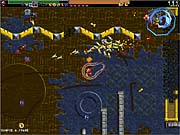
TT: The game was continuously tested as [it] was created. Very few features were planned from the start, but instead, we created the weapons, spaceships, and mission styles as we went along. You could say that testing was not really a job, but rather a necessity for our own entertainment. We played the game against each other whenever we hung out together. It was what we did. You could say we tested the game extensively for about a year and a half.
GS: Are many people playing the game?
TT: Hard to say. Since there is no Internet play option in the version currently out there, it is hard for us to tell. We haven't sold that many, but we know that lots of people are playing pirate versions. We receive numerous requests and comments from people who we know haven't bought the game but play it anyway. I guess that's quite common.
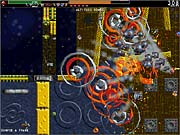
GS: Besides its gameplay, what do you think has most contributed to the success of Chase Ace 2?
TT: The simplicity. You sit down and you play. I have seen people who had hardly ever played a computer game and suddenly were yelling and screaming while playing Chase Ace. It is quite catchy because it is so simple. The game works equally well for both young kids and adults.
GS: Where is the Chase Ace series headed in the future?
TT: For a period after releasing Chase Ace 2, we haven't worked much on it. Mainly because other projects came along, and we wanted to wait a bit and see what was happening with the game. Recently, we started working on Internet playability, which is one of the things we know has been missing since Chase Ace 2 was released. We expect to complete the Internet play mode within a few months.
In the long run, we hope to be able to make Chase Ace 3. This project demands a significantly more structured development process if it is to live up to our own expectations. And more money.
Next: Unexpected obstacles to indie developers
GS: Are there any other projects in the works that you'd like readers to know about?
TT: Space Time Foam is doing other stuff besides Chase Ace. The latest addition is a drum sequencer called AlgoRhythm, which was finished a few weeks ago. It's quite [different] from Chase Ace, but we like to diversify. Chase Ace was initially created because we wanted to play the game ourselves; the same could be said about AlgoRhythm. We couldn't find any drum sequencers with the features we required, so we created this one ourselves. Jeppe Juul, who did the funky tracks for Chase Ace and who has been testing and using the program, and I programmed it.
GS: As an independent developer, what has been the biggest obstacle you've faced in producing your games?
TT: Time. Chase Ace 2 was developed entirely in our spare time. Some of us had full-time jobs, so most of the work was done late at night and on weekends. Since this was our first release, we had no resources to base the production on, so we had to go to the bank for money when we were ready to produce the CDs. We couldn't have done it if it wasn't fun.
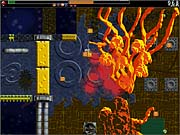
GS: Did you encounter any major snags during the development of Chase Ace 2?
TT: Well, there was this little detail we learned the hard way. When we were completely finished with the game and had sent the master to the CD factory, we got a call from the factory asking about an NCB permission. We had never done anything like this before, so we hadn't really checked up on the rights to the music in the game. It turned out that since our musicians were members of the Danish music copyright agency, Coda, we had to pay a fee of 13,000 kroner (about $2,000) to get permission to produce the CDs. We hadn't really planned on that extra expense in our tiny little budget.
GS: What tools did you use in the creation process?
TT: A bit differently from other games, Chase Ace was developed mainly in Visual Basic. The first playable version of Chase Ace was done as a test to see what could be done in Visual Basic using DirectX. A Frenchman, Patrice Scribe (www.chez.com/scribe), had made type libraries that enabled VB developers to access the powerful DirectX engine. Using the Internet and many resource sites, it was possible to get almost all the technical information needed for the development. Later, some utility functions were added in C++ to handle some of the areas that VB couldn't.
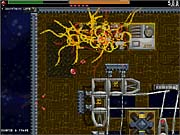
For the graphics, we used 3D Studio MAX and Photoshop, which Peter and I were already proficient in, as we both worked full-time at Afilm (www.afilm.dk) at the time as 3D animators for commercials and feature films.
GS: Were you hindered by technology in any way during the development of the game, or are the proper tools readily available for those willing to take the time to learn to use them?
TT: Using Visual Basic was kind of an obstacle in itself. At the time we were making Chase Ace, there was no official support for DirectX in VB, but thanks to Patrice Scribe's site showing how to do it, [we did it] anyway.
Next: Listening to fan feedback and suggestions
Whether you use VB or C++ to develop a game, it is mainly just a question of starting. Having no prior programming or graphics experience can be quite limiting, but if you start small and simple (like the first Chase Ace), it comes along the way, and you end up knowing a lot more about game design when you're finished. If we were to do Chase Ace over again, I am quite sure we would've approached programming differently.
GS: How much input do fans and beta testers have on your project? Do you use them to help guide the game's content or mainly to test its features?
TT: During development we were our own greatest fans. We created the game for ourselves, so naturally we did mainly what we found was funny. There was quite a time gap between Chase Ace and Chase Ace 2, because we often felt we had to add just a few more features. During this time, we got e-mails like, "please add power-ups" and "please add AI enemies," and we did, but the majority of ideas came from our own experiences while playing the game.
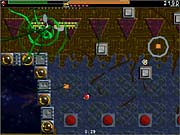
GS: What do you think the future looks like for independent developers? Will it become harder to do what you do, or are things looking up?
TT: There are lots of people doing games, and if you want to, I think it is always possible to create a game on your own. Perhaps not a really advanced one using extremely complex 3D stuff, AI, and physics, but there are lots of tools available for people who want to use them. A good example is the WildTangent 3D engine, which is available for anyone who wants to create browser-based 3D games. The technology is state of the art, it opens up some really cool perspectives, and it is free.
I think we will see more and more stuff like that in the future. Gaming is big and getting bigger, and as it happens with filmmaking, where small independent groups of people produce great short movies for Internet viewing, the same could happen with games. When computers arrive at a state where advanced games can be made in scripting languages like Flash and Shockwave, the market will really open up for independent game development.
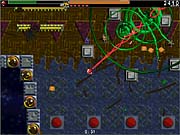
GS: Any tips for other independent teams who want to publish a game on their own?
TT: Hmm... Don't expect fame and fortune right away. Most of the work involved in launching a game is marketing and promotion. That part of the task proved a lot bigger for us than we initially thought. Developing the game was fun, but the really serious test comes when the game is released.
It takes a tremendous amount of time and effort first of all to find all the gaming sites, then write e-mails to all the contact people to explain to them why they should put a review of the game in their magazine and on their Web pages.
It is very difficult to figure out exactly what it is that triggers potential buyers, and it can be very frustrating when nothing seems to happen.
GS: Do you have time to play other computer games? If so, what are your favorites and why?
TT: For a while, we played a lot of Unreal and the Strike Force mod for Unreal. Racing games are also a big hit for us, especially if you can play split-screen. Tactical mission games like SWAT 3 and I'm Going In can also entertain us for hours, and before soccer games became so advanced that you needed two computers to play against each other, they were also a major kick.
GS: How many people were involved in the development of Chase Ace 2, and what were their roles?
TT: Tobias Thorsen: programming, graphics, sound, and level design. Started the process, and spent most of his free time for a year and a half on Chase Ace.
Jeppe Juul: level design, funky music tracks, testing, and ideas. Frequent visitor at Tobias' house, which would often result in late-night CA2 gaming.
Peter Holm: home page, level design, sound effects, and ideas. Also a frequent gamer at Tobias' house, always with comments on the latest additions to the game.
Jesper Colding-Jørgensen: techno tracks. Colleague at Afilm and part-time musician.
José Martinez: spaceship design. Belgian cartoonist.
Peter Villumsen: additional artwork. Cartoonist and friend of Tobias.
Got a news tip or want to contact us directly? Email news@gamespot.com
Join the conversation